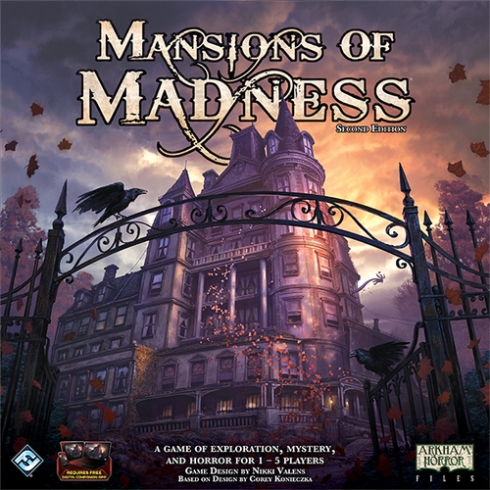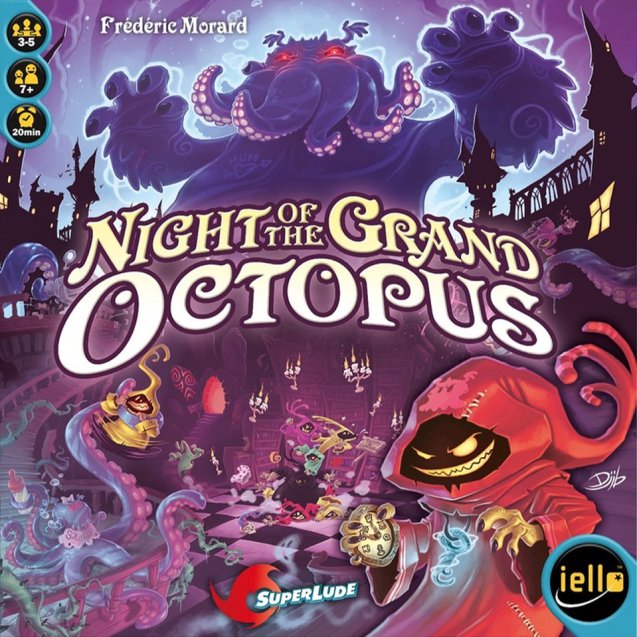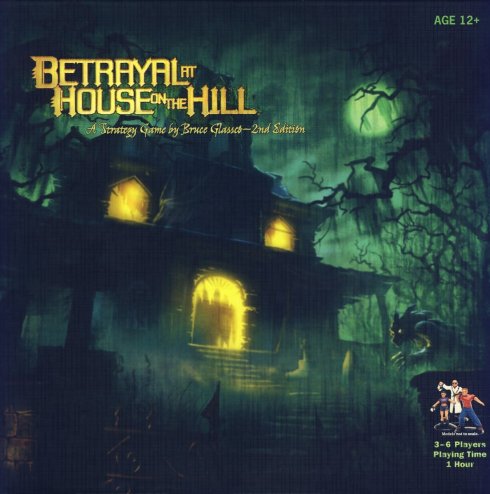 It’s no secret that I LOVE Fantasy Flight Games. They are probably my favorite company for board games (I play several games from FFG and have several more on my wishlist). It’s also no secret that I love Lovecraftian horror. So, when I saw a copy of Mansion of Madness in the wild, I jumped at the chance to get it.
It’s no secret that I LOVE Fantasy Flight Games. They are probably my favorite company for board games (I play several games from FFG and have several more on my wishlist). It’s also no secret that I love Lovecraftian horror. So, when I saw a copy of Mansion of Madness in the wild, I jumped at the chance to get it.
Mansion of Madness 2nd Edition, is a cooperative game in which you assume the role of an investigator looking in to strange occurrences. The game utilizes a companion app that controls the flow of the game. The app provides the story, tells you what rooms to place, spawns monsters and provides random events.
Game play is divided into two phases: the Investigator Phase and the Mythos Phase. During the Investigator Phase, players explore the mansion, search for clues and items and fight monsters. During the Mythos Phase, the app take over and controls monster movement and attacks, monster spawns and the random events.
Investigators take damage or horror depending on what monster they are fighting or how the monster attacks. The random events can even cause an investigator to take damage or horror. Once the limit for damage or horror is reached the first time, the investigator is wounded (for damage) or insane (for horror). It is possible to be both wounded and insane at the same time. But, take enough damage or horror a second time and it’s game over.
My wife and I have played twice and both times we lost to the app. But, we did better the second play through. The is quickly becoming a go to game when we want to play a horror survival game, but don’t have enough people to play Betrayal at House on the Hill.
Mansion of Madness 2nd Edition supports 1-5 players and can take anywhere from 90 minutes to 3 hours depending on the scenario.
Pros
- I love the app integration. It’s basically the players vs the app. No one needs to be the bad guy driving the story.
- The game is highly repayable: the two games my wife and I played, while basically the same story, utilized a different layout. So replaying the same scenario multiple times retains some freshness.
- Expansions! My wife thinks expansion are the biggest racket in board gaming…well, next to sleeves (Apparently she’s not familiar with DLC in video games). At this time, there is one expansion as well as two tile & monster sets that bring the tiles and monsters from the 1st edition to the 2nd edition.
- Already have the 1st edition and want the 2nd edition? No problem. The 2nd edition comes with a conversion kit. Just buy the base set for the 2nd edition and integrate your existing components from the 1st edition and follow the instructions to convert the 1st edition to the 2nd edition.
Cons
- My biggest complaint is the bases for the monster miniatures. They are big, unwieldy, and the miniatures are constantly falling off. I wish I did not pace the monster cards into the bases and only used the monster cards for the game. I would have been so much better. But some of them are tight in the base and the artwork is scratched.
- The tiles don’t connect together so tiles are constantly sliding on the table.
 I picked this game up a few months ago because it looked like something I could teach my then six year old to play. I had to laugh after I unboxed the game, got everything ready and we played our first game because it took me longer to get everything ready that it did for us to play our first game.
I picked this game up a few months ago because it looked like something I could teach my then six year old to play. I had to laugh after I unboxed the game, got everything ready and we played our first game because it took me longer to get everything ready that it did for us to play our first game. It’s no secret that I LOVE
It’s no secret that I LOVE 